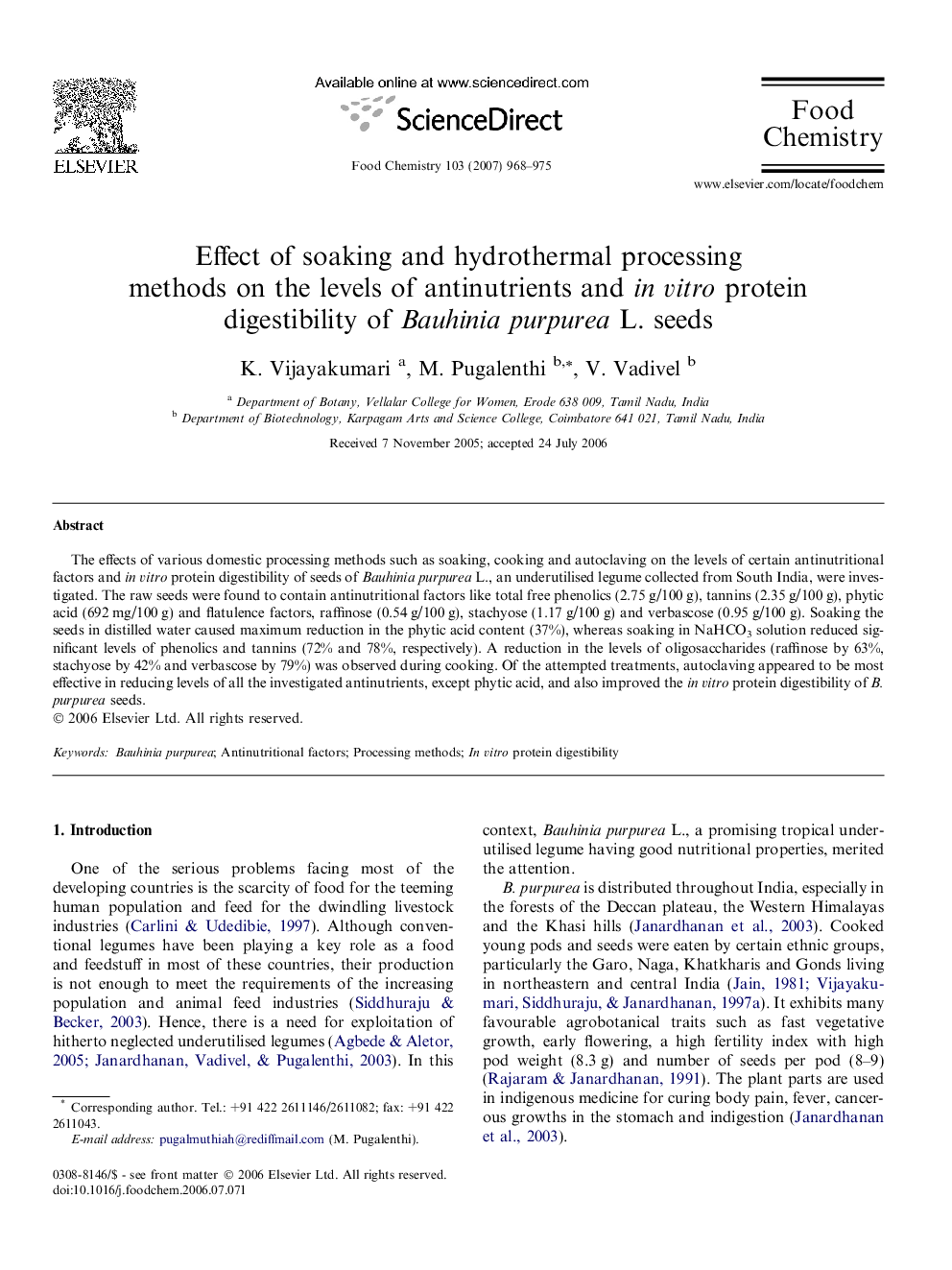| کد مقاله | کد نشریه | سال انتشار | مقاله انگلیسی | نسخه تمام متن |
|---|---|---|---|---|
| 1190411 | 963530 | 2007 | 8 صفحه PDF | دانلود رایگان |

The effects of various domestic processing methods such as soaking, cooking and autoclaving on the levels of certain antinutritional factors and in vitro protein digestibility of seeds of Bauhinia purpurea L., an underutilised legume collected from South India, were investigated. The raw seeds were found to contain antinutritional factors like total free phenolics (2.75 g/100 g), tannins (2.35 g/100 g), phytic acid (692 mg/100 g) and flatulence factors, raffinose (0.54 g/100 g), stachyose (1.17 g/100 g) and verbascose (0.95 g/100 g). Soaking the seeds in distilled water caused maximum reduction in the phytic acid content (37%), whereas soaking in NaHCO3 solution reduced significant levels of phenolics and tannins (72% and 78%, respectively). A reduction in the levels of oligosaccharides (raffinose by 63%, stachyose by 42% and verbascose by 79%) was observed during cooking. Of the attempted treatments, autoclaving appeared to be most effective in reducing levels of all the investigated antinutrients, except phytic acid, and also improved the in vitro protein digestibility of B. purpurea seeds.
Journal: Food Chemistry - Volume 103, Issue 3, 2007, Pages 968–975